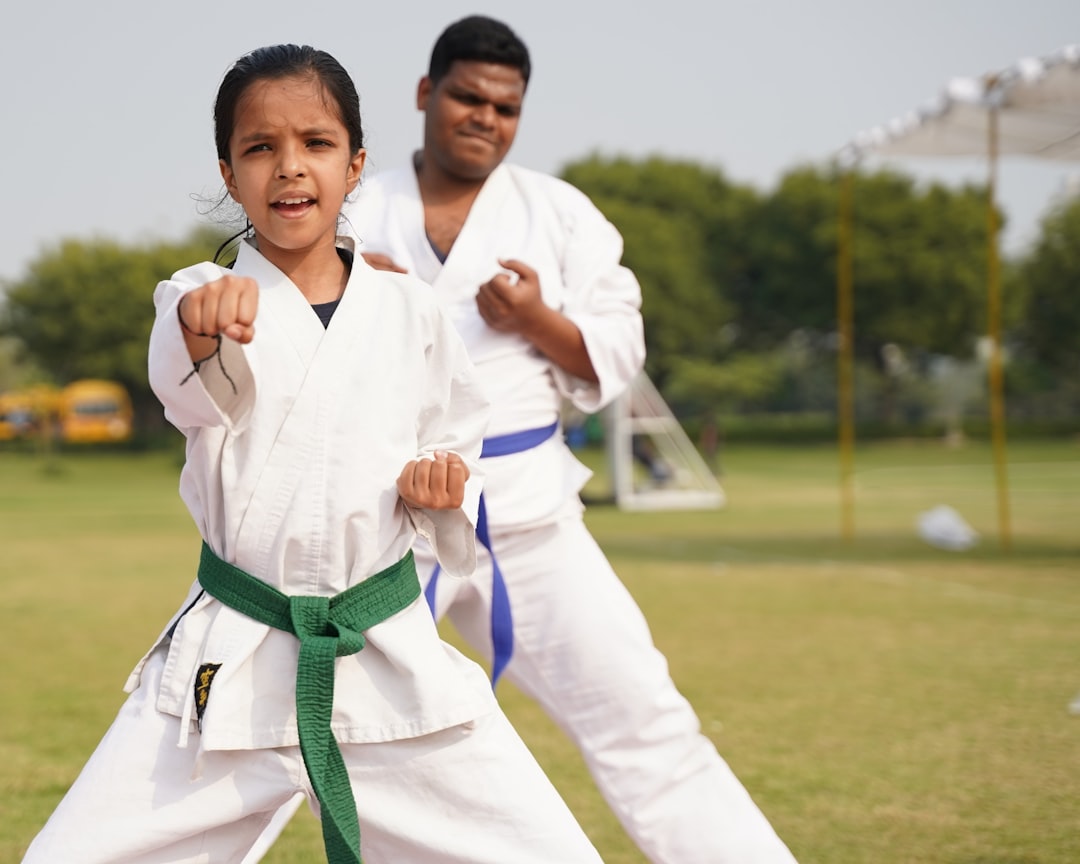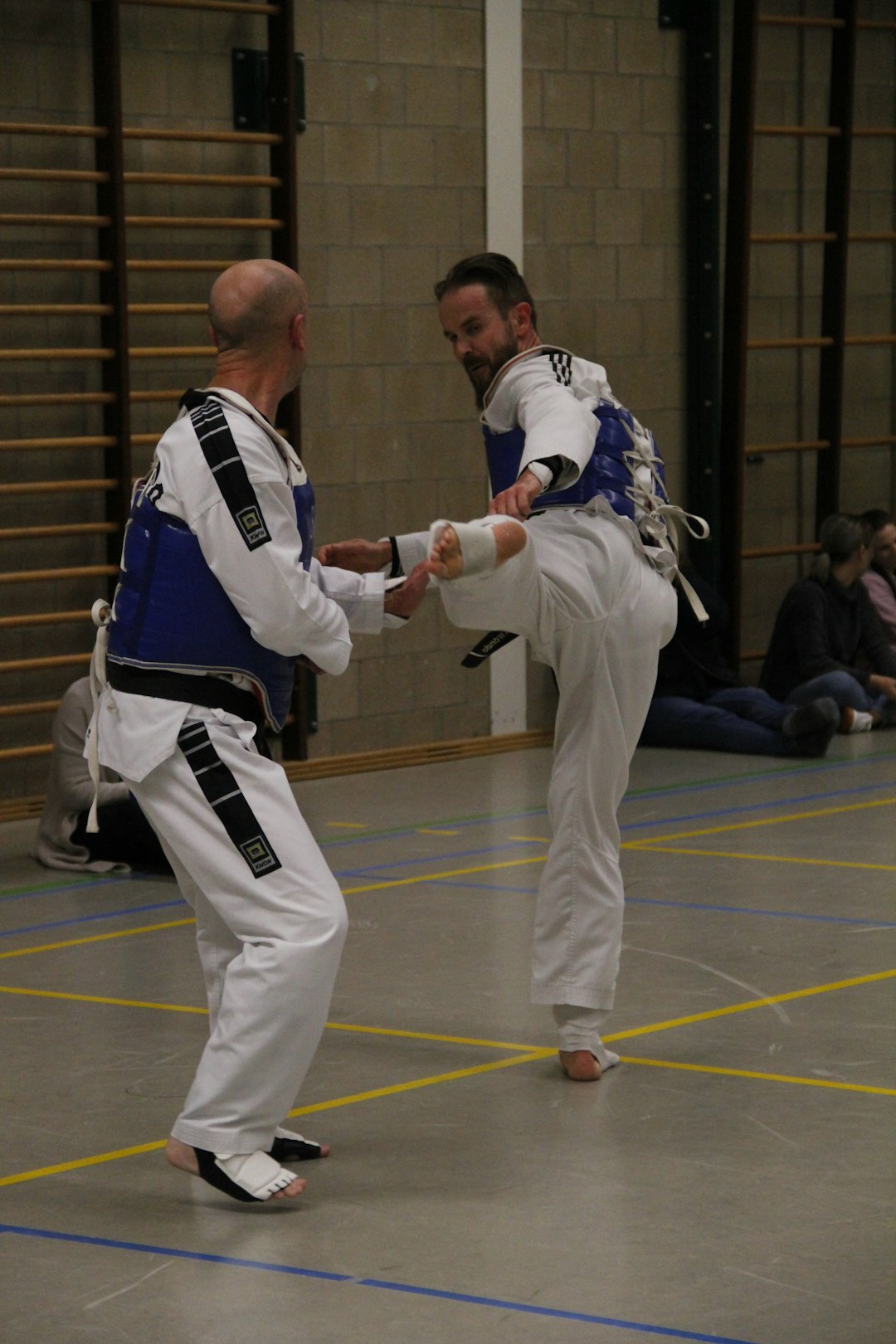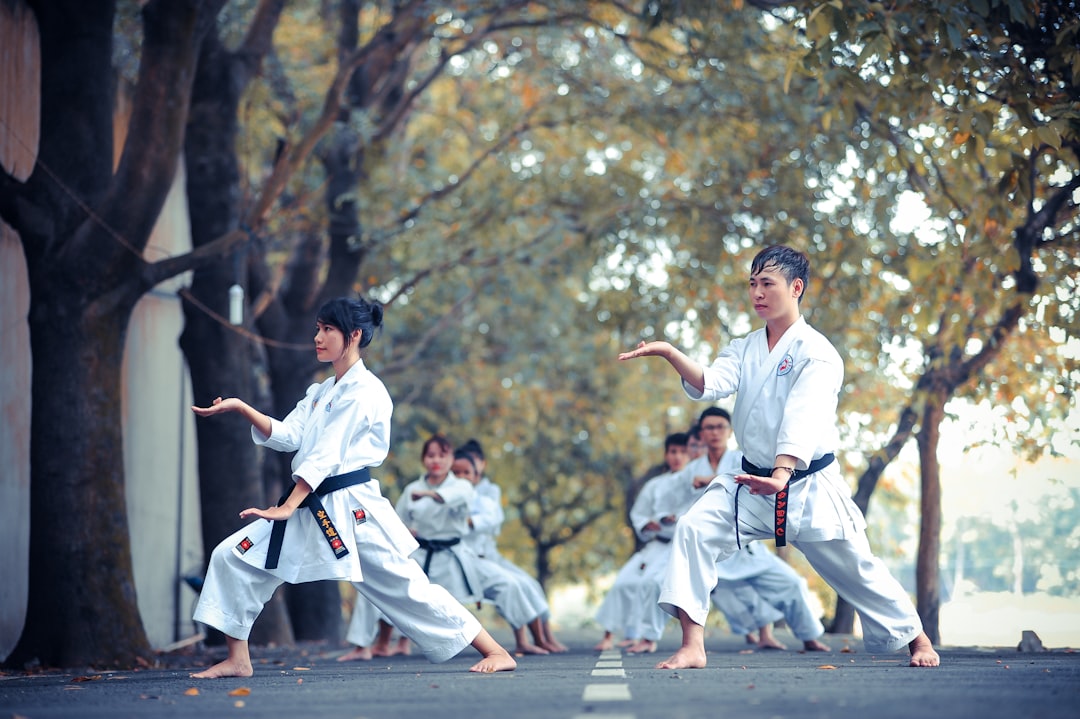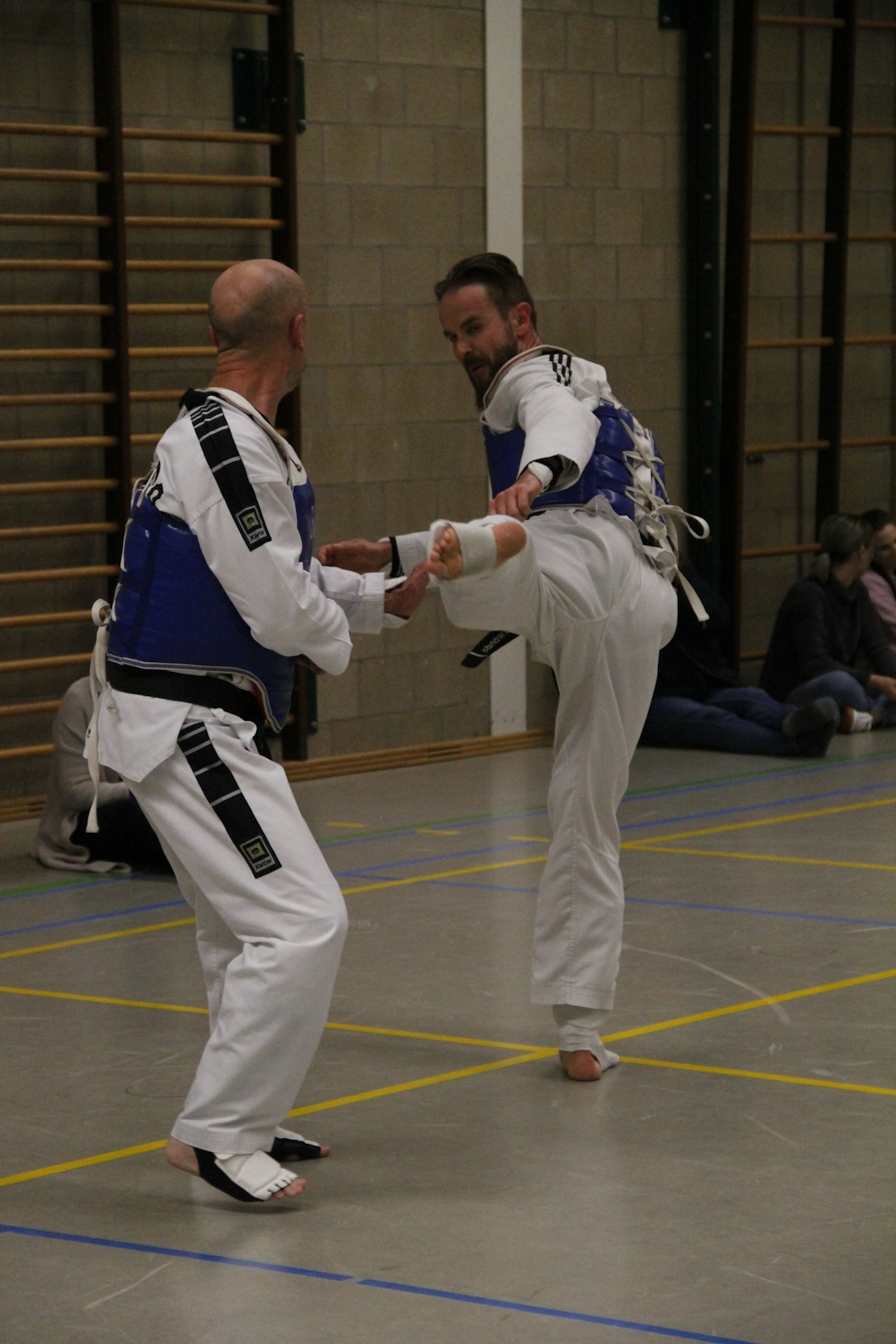The "Gi," an essential element in karate training, serves as both a cultural symbol and a functional uniform for practitioners. It consists of a jacket, trousers, and an obi belt, with colored belts indicating the wearer's skill level and rank, from beginner to black belt. The white Gi represents purity and respect, facilitating movement while ensuring safety through its minimalist design. Historically, karate practitioners trained without a specific uniform, but as the sport evolved into an international discipline, the need for a standardized outfit emerged. The evolution led to the adoption of the keikogi, which has been refined to balance tradition with contemporary needs, now standardized by organizations like the World Karate Federation (WKF). Selecting the right karate Gi is crucial; it should be made of breathable, moisture-wicking fabric that supports mobility and withstands the rigors of training without causing interference. The Gi's color system visually represents a practitioner's progress within karate, from white for beginners to black for advanced black belts, each color symbolizing different stages of skill and dedication. This uniform, often referred to by its karate outfit name, is central to the identity and development of a karateka, fostering unity and respect among practitioners in the martial arts community.
Karate enthusiasts and practitioners often step onto the mat with a routine that is both precise and powerful, each movement a testament to discipline and skill. Central to this practice is the karate outfit, colloquially known as a gi. This article delves into the essence of the gi, exploring its traditional roots, evolution over time, and the key features that distinguish it from other martial arts attire. From understanding the correct terminology—what do you call a karate outfit?—to recognizing the symbolic color codes that denote rank, this comprehensive guide will enlighten readers on the significance of the karate gi in maintaining the integrity and tradition of this revered martial art. Join us as we explore the world of karate outfits and their indispensable role in the discipline’s rich history and dynamic modern practice.
- Understanding Traditional Karate Attire: The Gi Explained
- The Evolution of Karate Uniforms: From Origin to Modern Day
- Key Features and Fabric Considerations for Effective Movement in a Karate Gi
- Color Codes and Rank Identification within Karate Gis
Understanding Traditional Karate Attire: The Gi Explained

When engaging with the practice of karate, one is often confronted with the term “Gi,” which refers to the traditional attire worn by practitioners during training and competitions. This garment is a fundamental aspect of the discipline, reflecting both the cultural heritage and the practical requirements of the martial art. The Gi typically consists of a jacket, trousers, and a belt, known as an obi, which serves to indicate the wearer’s rank or level within their karate practice. What is the specific name of a karate outfit? A karate outfit, specifically for this martial art, is called a Gi. It is a white garment that allows for ease of movement and flexibility, essential for the fluid execution of techniques. The top, or jacket, is buttoned up and extends down to around the mid-thigh, while the pants are straight-legged and secured with a sash. The Gi’s simplicity in design not only signifies respect for oneself and others but also ensures that any potential injuries during practice are minimized due to the material’s grip on itself, reducing the likelihood of clothing catching or snagging. How does the Gi facilitate both cultural integrity and practical training needs? The Gi facilitates both cultural integrity by adhering to tradition and practical training needs by offering durability, comfort, and safety for the practitioner during practice and sparring.
The Evolution of Karate Uniforms: From Origin to Modern Day

Karate practitioners around the world are familiar with the traditional garb they don during practice and competition, but have you ever pondered the origins and evolution of this distinctive attire? The karate outfit, often referred to as a “keikogi” in Japanese, has a history that intertwines with the discipline’s martial roots. Initially, practitioners trained bare-bodied, emphasizing function over form. Over time, as karate evolved from an obscure Okinawan defense mechanism to an internationally recognized sport, the need for a uniform that balanced functionality with recognition of rank became apparent. This led to the development of the keikogi, which is characterized by its loose-fitting top, trousers with a white belt, and often a jacket with belt ties at the sides, signifying the wearer’s level of skill and dedication within the art.
What exactly constitutes a karate outfit name? The term “keikogi” is the traditional Japanese term for the garment worn by practitioners. It typically consists of a jacket, pants, and a belt, with specific colors and patterns denoting the wearer’s rank. Over the decades, this uniform has undergone subtle changes to meet the needs of both traditionalists and modern competitors. In competition settings, such as those governed by the World Karate Federation (WKF), the keikogi has been standardized in terms of design and color to ensure fairness and a level playing field. Today, when you step onto a karate mat, whether for practice or competition, you are donning a piece of history that has been carefully tailored to suit the present-day demands of this ancient martial art.
Key Features and Fabric Considerations for Effective Movement in a Karate Gi

When participating in karate, the choice of attire plays a pivotal role in ensuring that every movement is executed with precision and ease. The traditional karate outfit, commonly referred to as a “gi,” is designed to facilitate optimal performance during practice and competition. A key feature of an effective karate gi is its lightweight fabric, which allows for a range of motion without impeding the practitioner’s movements. Is the fabric used in a karate gi lightweight and breathable? Indeed, it is; typically, cotton or a cotton blend is favored for its lightness and ability to absorb moisture, keeping the wearer cool and comfortable throughout rigorous training sessions. The weave of the fabric should be tight enough to prevent snagging or catching during techniques like throws or grappling maneuvers. Does the karate outfit have a design that minimizes interference with movements? Yes, it does. A well-tailored gi will have a fitted cut at the wrist and ankle, minimizing material bunching and potential obstruction. The trousers are straight-legged for ease of movement, while the jacket is designed to taper slightly at the waist, ensuring that the garment remains in place during dynamic activities. The shoulder area is often reinforced to withstand frequent gripping and pulling, a testament to the durability required for the demands of karate practice. When selecting a karate gi, one should consider these elements to ensure that the outfit not only adheres to traditional standards but also supports the athlete’s range of motion and durability needs.
Color Codes and Rank Identification within Karate Gis

Within the traditional practice of karate, the gi, often referred to as a karate uniform or do-gi, serves as more than just an outfit; it symbolizes the rank and skill level of the practitioner. The color coding system on these gis is a clear indicator of the wearer’s progress within the discipline. Typically, beginner ranks are denoted by white gis, signifying purity and humility, which are foundational virtues in karate. As students advance through the kyu levels (ranks below black belt), their gis may change color to reflect their increasing knowledge and skill. For instance, brown or red hues often indicate a mid-level proficiency, with black signaling an accomplished practitioner who has reached the level of shodan, or first-degree black belt. These color codes not only differentiate the skill sets but also foster a sense of unity and respect within the karate community. How do these colors reflect the wearer’s rank in karate? The white gi indicates the lowest rank, while darker colors like black indicate higher levels of expertise and dedication to the discipline. What does the color change in the gi signify? It represents the progression of skill, with each new color symbolizing a different stage in the practitioner’s martial arts journey.
In conclusion, the term “karate outfit” often refers to the traditional attire known as a ‘Gi,’ which is central to the practice and tradition of karate. This article has explored the origins, evolution, and key features of the Gi, emphasizing its significance in facilitating the movements inherent to karate practice. From its functional design to the color-coded system that signifies rank, the Gi serves as a symbol of respect, discipline, and the martial artist’s journey. Whether you are a seasoned practitioner or new to the dojo, understanding the essence and nuances of this garment is essential to appreciating the depth of karate culture.
